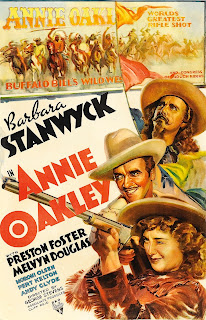Cody, Wyoming is one of my favorite places to visit. Over the past 25 years I've spent a bunch of time there participating in the 'Cody Old West Show', the 'Western Design Conference' (WDC), hanging out at the Buffalo Bill Historical Center or getting ready for a trail ride in the backcountry.
I don't know if it was pure happenstance or maybe a little good old fashioned karma, but when we got to Cody -- on our trip this summer -- we discovered the town was in the middle of 'Rendezvous Royale' a week in September devoted to a nationally recognized contemporary western art show and auction, an exhibition Western design, and a downtown festival.
The evening we arrived -- 'Boot Scoot'n Boogie' -- the downtown street festival showcasing the thriving local art community and Cody businesses was in full swing. We had dinner at the Proud Cut then wandered around enjoying Cody's unique boutiques and cowboy culture.
As planned the next morning we went to the Buffalo Bill Historical Center to see its Plains Indian Museum, Whitney Gallery of Western Art, Cody Firearms Museum and of course the Buffalo Bill Museum. To our surprise and delight an exhibition called 'Cody High Style' -- a celebration of Western Decorative arts with current works from today's best contemporary artists was on display.
I don't know anything about the politics behind the change, but it was clear to me 'Cody High Style' is what was once called the 'Western Design Conference.' One artist explained to me that the design conference was moved to Jackson Hole, so the Buffalo Bill Historical Center offered to sponsor 'Cody High Style' to keep a Western Decorative arts show in Cody. To me that's just good cowboy logic since the whole modern movement of Western Decorative arts started out as a tribute to the late Thomas Molesworth who operated the Shoshone Furniture Company in Cody from 1931 to 1961.
 |
Yours truly at the first WDC (1993)
|
I had a wonderful visit with old friends like Jimmy Covert and Dan MacPhail -- pals I made back when the 'Western Design Conference' first started in 1993. It's hard to believe it has been almost 20 years. I learned that the artists who had attended the first Western Design Conference were wearing the original 1993 WDC badge -- sort of a badge of honor I guess. I know I still treasure mine.
Whatever you call it -- lodge furniture, cowboy chic, rancho deluxe, or cowboy high style -- I'm glad there are still artists creating decorative arts that honor our Western heritage.
I retired from building my 'Lure of the Dim Trails' line of cowboy chic furniture back in 2002 (because of back problems) but on good days I think about creating just one more piece :)













.jpg)


.jpg)


















